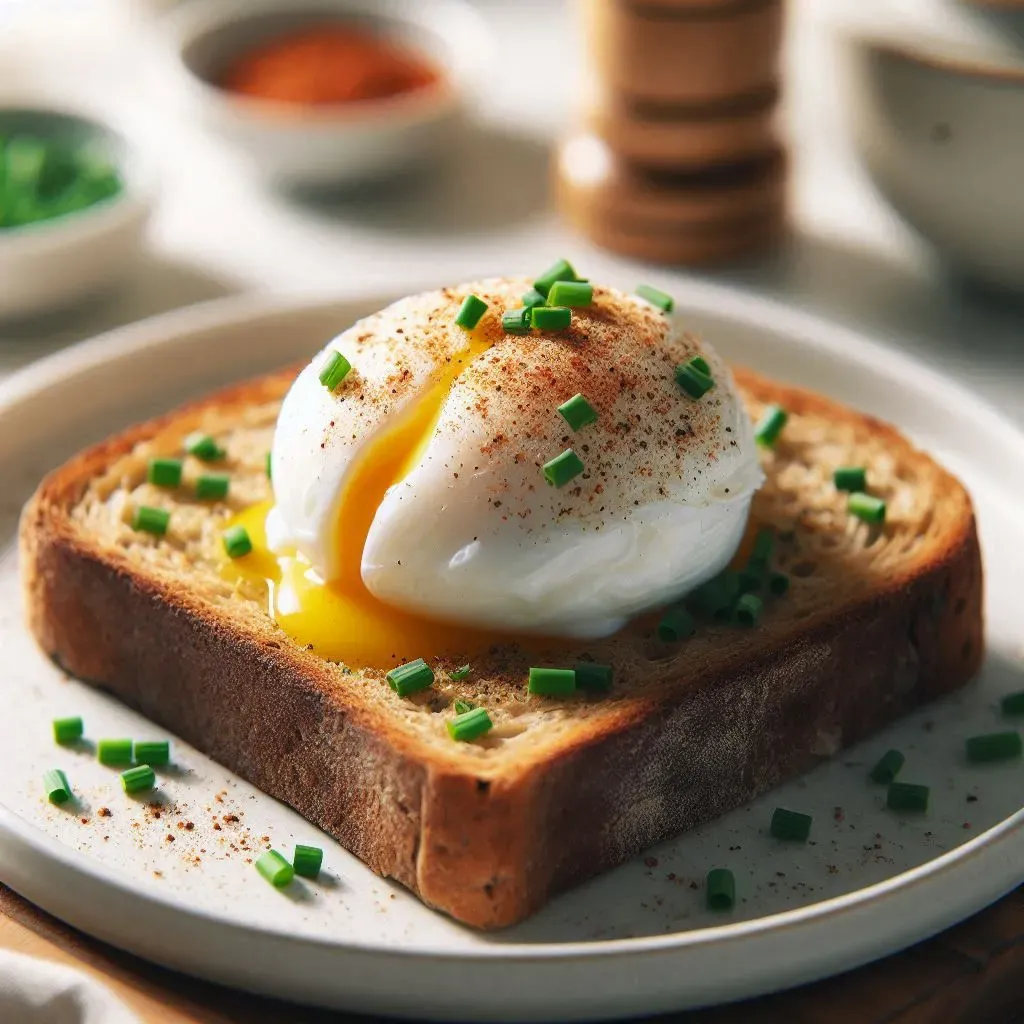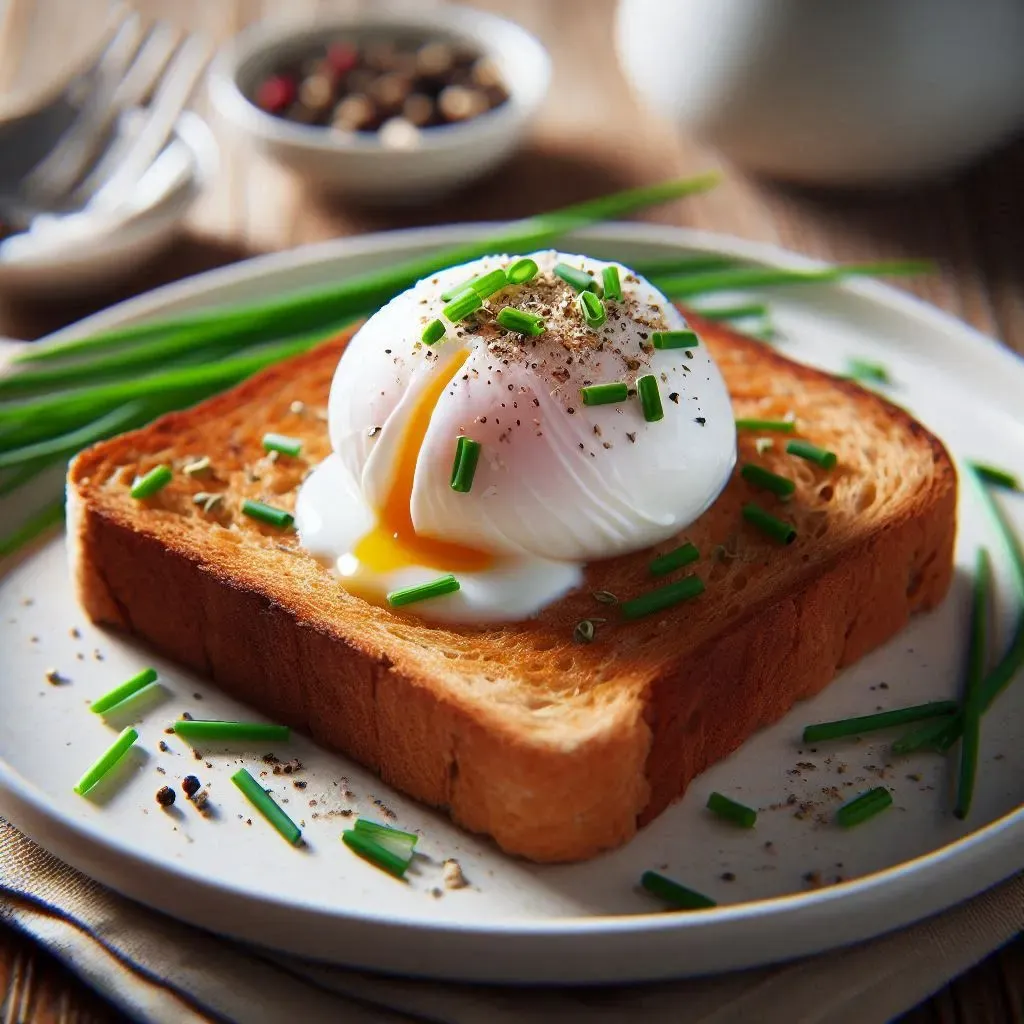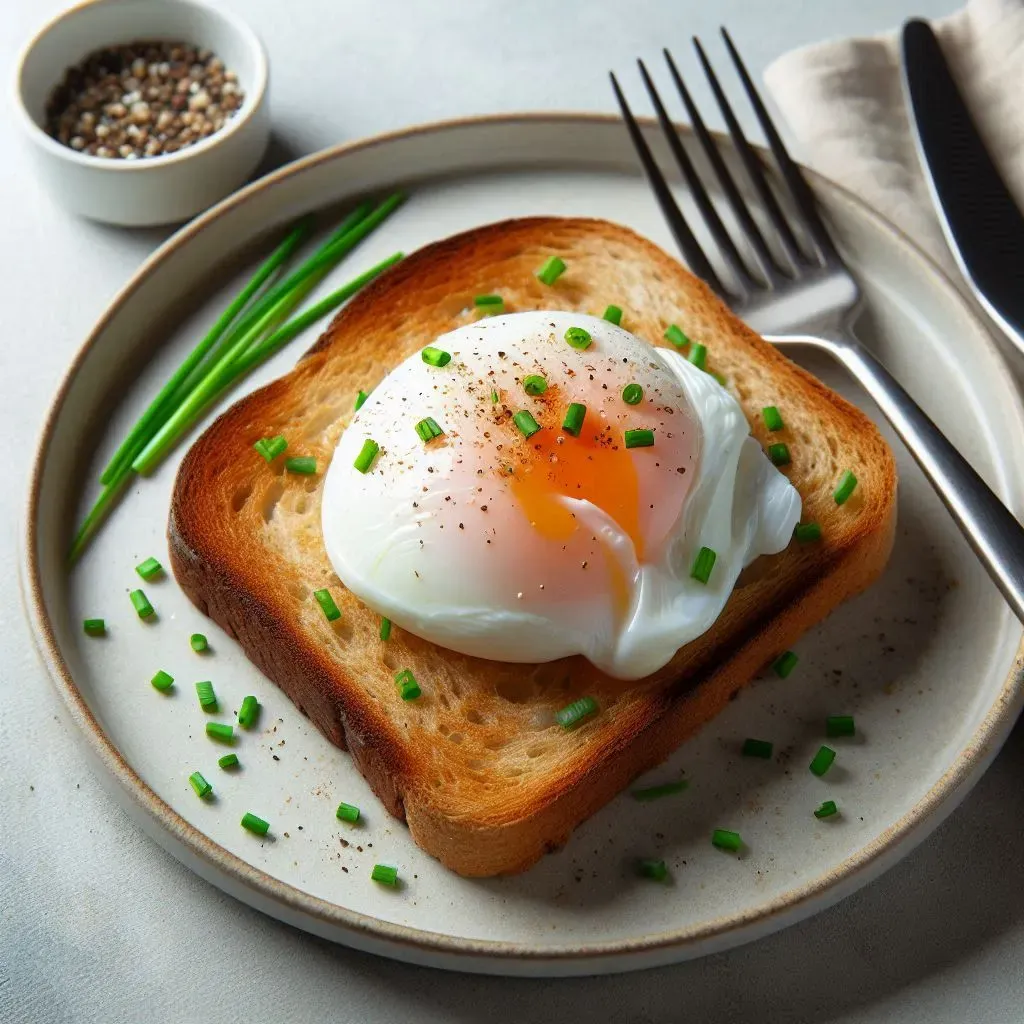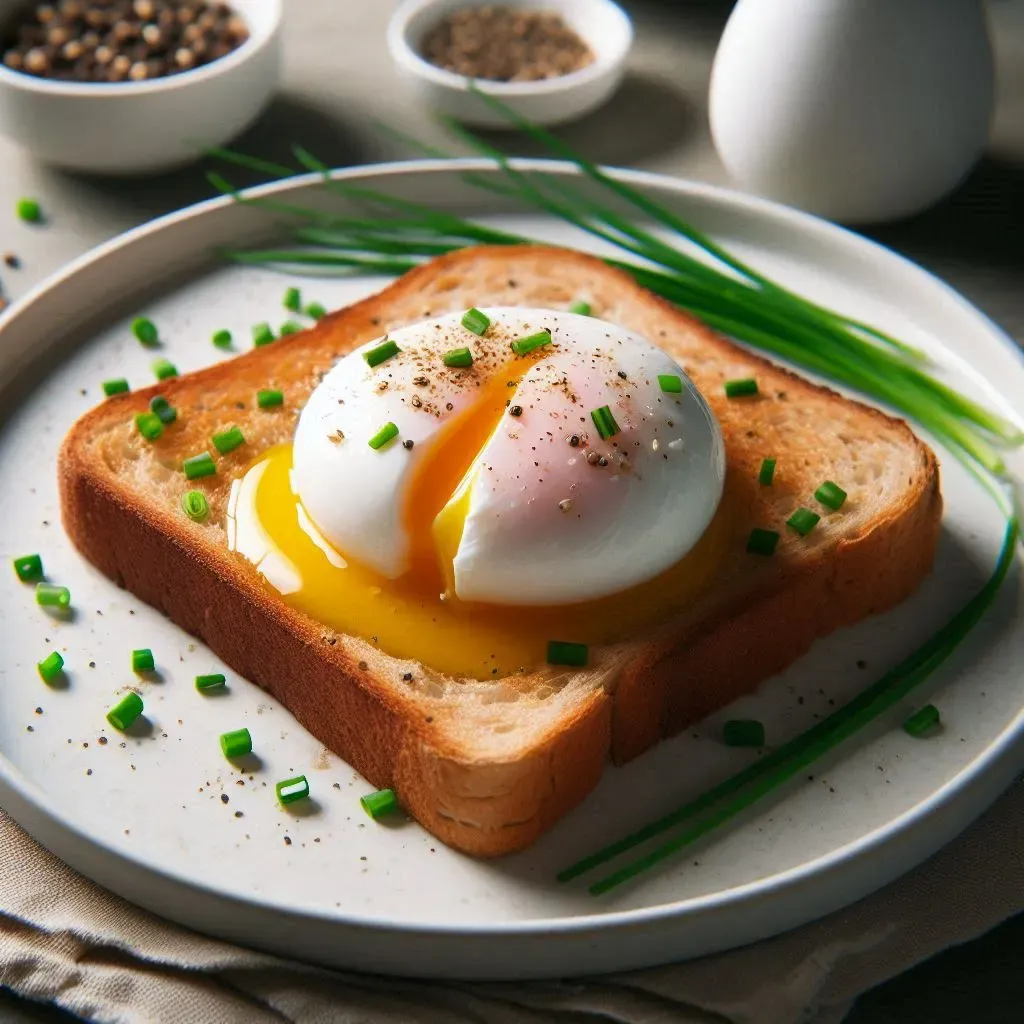- How to Be Funny Ultimate 2025 Guide - 07/21/2025
- 100 Best Guess What Jokes Ultimate 2025 Guide - 07/21/2025
- What the Difference Between Jokes? 2025 In-Depth - 07/21/2025

Table of Contents
Poaching an egg is a delicate cooking technique that, when done correctly, yields a perfectly cooked egg with a firm white and a runny yolk. It’s a simple yet elegant way to prepare eggs, often seen in dishes like Eggs Benedict or served on toast with a sprinkle of salt and pepper. This guide will walk you through the process of poaching an egg, providing tips to ensure success and avoiding common pitfalls.
What is Poaching?
Poaching is a gentle cooking method that involves simmering food in liquid, usually water, just below boiling point. The liquid should be kept at a temperature between 160°F (71°C) and 180°F (82°C). This technique is particularly well-suited for delicate foods like eggs, as it allows them to cook evenly without becoming tough or rubbery.
Equipment and Ingredients
Before you begin, gather the necessary equipment and ingredients:
- Fresh eggs: Freshness is key to a well-poached egg. The fresher the egg, the more likely the white will stay together and not disperse in the water.
- A pot: Choose a medium-sized pot that allows you to fill it with about 3 inches (7.5 cm) of water.
- Vinegar: White vinegar or apple cider vinegar helps the egg whites coagulate faster, keeping them from spreading out too much in the water. Use about a tablespoon per quart of water.
- A slotted spoon: This will help you gently lift the poached egg out of the water without breaking it.
- A small bowl: Crack the egg into a small bowl before poaching. This allows you to easily slide the egg into the water and check for freshness.
Step-by-Step Guide to Poaching an Egg
- Prepare the Water:
- Fill your pot with about 3 inches (7.5 cm) of water. The water depth is important because it allows the egg to float freely while cooking.
- Add a tablespoon of vinegar to the water. The acidity helps the egg white to coagulate quickly, reducing the chances of it spreading out in the water.
- Heat the water over medium heat until it reaches a simmer. The water should have small bubbles rising from the bottom of the pot but should not be boiling.
- Prepare the Egg:
- Crack the egg into a small bowl. This step allows you to gently slide the egg into the water and ensures that the yolk stays intact.
- Create a Gentle Swirl:
- Before adding the egg, use a spoon or whisk to create a gentle whirlpool in the water. This swirling motion helps the egg white wrap around the yolk, giving you a more compact, round poached egg.
- Slide the Egg into the Water:
- Gently lower the bowl with the egg into the water and tilt it to slide the egg out. The egg should enter the water near the surface to avoid breaking the yolk.
- Allow the egg to cook undisturbed for 3 to 4 minutes for a runny yolk. If you prefer a firmer yolk, cook it for 5 minutes.
- Check for Doneness:
- After 3 minutes, use a slotted spoon to lift the egg out of the water and gently press the white to check for firmness. The white should be set, and the yolk should still be soft to the touch.
- Drain and Serve:
- Once the egg is done to your liking, use the slotted spoon to remove it from the water. Hold the spoon over a paper towel or a clean kitchen towel for a few seconds to drain any excess water.
- Serve the poached egg immediately, seasoned with salt and pepper, or on a dish of your choice.
Troubleshooting Common Problems
- Whites Spreading in the Water: If the egg whites spread too much, it could be due to using an older egg. Older eggs have thinner whites, which are more likely to spread out. Using vinegar and creating a gentle whirlpool can help minimize this problem.
- Overcooked Egg Yolk: If the yolk is overcooked, the water may have been too hot, or the egg was cooked for too long. Keep the water at a gentle simmer and time the cooking process carefully.
- Watery Egg White: If the egg white seems watery after poaching, it might not have been cooked long enough. Ensure that the whites are fully set before removing the egg from the water.
Tips for Perfect Poached Eggs
- Use Fresh Eggs: The fresher the egg, the better the result. Fresh eggs have firmer whites, which hold together more effectively when poached.
- Maintain the Right Temperature: Keep the water at a simmer, not a boil. Too much agitation in the water can cause the egg whites to break apart.
- Practice Makes Perfect: Poaching eggs can be tricky at first, but with practice, you’ll develop a feel for the right timing and technique.


Conclusion
Poaching an egg may seem daunting at first, but with the right technique and a little practice, it becomes a straightforward task. The key is to start with fresh eggs, maintain a gentle simmer, and cook the egg just long enough for the whites to set while keeping the yolk deliciously runny. Whether you’re preparing a simple breakfast or a gourmet dish, a perfectly poached egg adds a touch of elegance to any meal.
Poaching (cooking) – Wikipedia
How to Make Chinese Dumplings (5 Steps) – love a happy home (loveahh.com)
- Best Roast Pork Egg Foo Young(1 In-Depth Guide)
- How to Make Pork Egg Foo Young(1 Perfect Guide)
- Egg Foo Young Gravy Recipe 2025 In-Depth Guide
- How to Make Shrimp Egg Foo Young(1 Detailed Guide)
- How to Make Egg Foo Young: A Detailed Guide
- Easy Orange Chicken Recipe 3 Ingredients
- Best American Chinese Food(8 types)
- How to Make Orange Chicken 2025 In-Depth Guide
🌍 Ultimate Travel & Adventure Gear – Limited-Time Amazon Deals! 🚀
Get ready for your next adventure with these top-rated travel and outdoor essentials, now available on Amazon with exclusive limited-time discounts!
🎒 SHRRADOO Extra Large 50L Travel Laptop Backpack – Airline-approved, spacious, and equipped with a USB charging port, perfect for business trips and college students.
🔗 Shop Now on Amazon
🎖️ REEBOW GEAR Military Tactical Backpack – A durable, army-style MOLLE bag, ideal for hiking, camping, and 3-day survival trips.
🔗 Shop Now on Amazon
📷 DJI Osmo Action 4 Essential Combo – A waterproof 4K/120fps action camera with exceptional low-light imaging, built for extreme sports and travel.
🔗 Shop Now on Amazon
🔥 GoPro HERO8 Black Bundle – Includes HERO8 Black camera, head strap, Shorty, 32GB SD card, and extra batteries, making it the ultimate travel vlog companion.
🔗 Shop Now on Amazon
🛸 DJI Mini 3 Pro (DJI RC) Drone – A lightweight, 4K camera drone with obstacle sensing and 34-minute flight time, perfect for capturing stunning aerial shots.
🔗 Shop Now on Amazon
✨ Limited-time deals available now! Don’t miss out – gear up for your next adventure today! ✨
🌟 Amazon Top Picks – Enhance Your Smart Life & Home! 🌟
Upgrade your home and workspace with these Amazon bestsellers, designed to make your life smarter, more efficient, and more comfortable. Limited-time discounts available – shop now!
🔥 Featured Amazon Deals 🔥
✅ Amazon Smart Plug (2-Pack) – Works with Alexa
Control your devices with simple voice commands! Perfect for smart home automation.
👉 Shop now on Amazon!
✅ Philips Hue A19 LED Smart Light Bulb (3-Pack) – White & Color Ambiance
Set the mood with customizable colors and smart control through Alexa, Google Assistant, or Apple HomeKit.
👉 Get it today on Amazon!
✅ SOUNDANCE Laptop Stand – Ergonomic Aluminum Riser
Boost your posture with this sleek, durable laptop stand. Compatible with 10–15.6 inch laptops.
👉 Order now on Amazon!
✅ Logitech Studio Series Mouse Pad – Anti-Slip & Spill-Resistant
Enjoy smooth gliding and durability with this stylish, easy-to-clean mouse pad.
👉 Buy it now on Amazon!
✅ FoodSaver Vacuum Sealer Bags (3-Pack) – Airtight & BPA-Free
Keep food fresh longer and make meal prep a breeze with these vacuum sealer bags.
👉 Get it now on Amazon!
⏳ Limited-Time Offers – Don’t Miss Out!
Take advantage of exclusive Amazon discounts on these game-changing products before the offers end! 🚀
🔥 Amazon’s Top Picks for a Quick & Easy Breakfast! 🔥
Don’t miss breakfast again! Make your own delicious breakfast at home with these Amazon bestsellers – easy, fast, and hassle-free! 🍳🥪🍩
🎁 🚀 Limited-Time Deals – Get Yours Now! ⏳
✅ DASH Mini Waffle Maker – Make Perfect Waffles Anytime! ❤️
✔ Non-stick, easy to clean & perfect for waffles, paninis & more!
✅ DASH Mini Donut Maker – Fun & Kid-Friendly Treats! 🍩
✔ Makes 7 mini donuts in minutes – perfect for snacks & desserts!
✅ OVENTE Electric Sandwich Maker – Quick & Tasty Meals! 🥪
✔ Cooks sandwiches, grilled cheese & more with easy cleanup!
👉 Shop Now on Amazon & Grab These Deals Before They're Gone! 🚀
🌟 Featured Recommendations 🌟
Check out these amazing perfumes available on Amazon! Whether you're looking for a sweet floral scent or a warm, vanilla-based fragrance, these options are perfect for every occasion. 🛍️✨
- Lancôme La Vie Est Belle Eau de Parfum
Long-lasting fragrance with notes of iris, earthy patchouli, warm vanilla, and spun sugar. A perfect blend of floral & sweet for any woman.
💐🌸 Shop on Amazon - DKNY Be Delicious Eau de Parfum
A vibrant and fresh fragrance that captures the essence of New York with fruity notes and a modern twist.
🍏🍋 Shop on Amazon - Ed Hardy Women's Perfume by Christian Audigier
A bold, edgy fragrance with a mix of floral and fruity notes for the confident woman.
🌹🍓 Shop on Amazon - Gucci Bamboo by Gucci for Women
Elegant and refined, with notes of floral and citrus, this fragrance embodies grace and sophistication.
🌿🍊 Shop on Amazon - Viktor & Rolf Flowerbomb Eau de Parfum
A captivating floral and woody scent with hints of vanilla, jasmine, and rose, perfect for any special occasion.
🌹✨ Shop on Amazon
These products are all available on Amazon, so click the links and discover your new signature scent today! 💖🎁
If you’ve made it this far and felt even the slightest spark of connection,
how about buying me a coffee? ☕
Your support is the reason I keep writing 💌
Tip whatever you like ✨❤️









